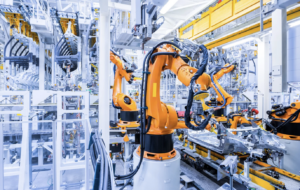Ads
As we look ahead to the technological landscape of 2025, it is evident that a wide array of advancements across various sectors will shape our future. From artificial intelligence (AI) and quantum computing to robotics, cybersecurity, and beyond, these technologies are set to revolutionize the way we work, live, and interact with the world around us.
AI has emerged as one of the most significant developments in the IT industry in recent years, with adoption rates soaring to 2.5 times higher than in 2017. Companies across sectors such as banking, healthcare, manufacturing, and retail are increasingly incorporating AI into their operations to drive efficiency and enhance customer experiences. What sets AI apart in 2025 is its democratization, with open-source solutions and affordable technologies making it accessible to businesses of all sizes.
OpenAI, the AI non-profit behind ChatGPT, is a prime example of how AI is being democratized. With a current valuation of $80 billion, OpenAI aims to triple its revenue to $12.7 billion by 2025. ChatGPT, OpenAI’s AI chatbot, has garnered widespread acclaim for its ability to generate conversational prose and understand natural language cues. With over 100 million users within the first two months of its launch, ChatGPT has set a new standard for AI-powered chatbots.
In addition to AI, advancements in early disease detection technologies are poised to transform the healthcare industry. Researchers and tech companies are investing in innovative solutions to detect cancer cells at an early stage, significantly improving survival rates for patients. For example, Biological Dynamics has developed a lab-on-a-chip test for pancreatic cancer that is currently undergoing human testing. MIT researchers are using AI algorithms to assess lung cancer risk in patients, with the potential to predict the disease up to six years in advance.
The investment in cleantech and innovation is another key trend that will define 2025. Clean technology has seen a surge in funding, with over $200 billion invested in 2023 alone. The Inflation Reduction Act has incentivized private sector investment in cleantech, leading to the establishment of hundreds of new businesses in the sector. Green hydrogen, in particular, has emerged as a promising energy source, with a projected market value of $7 billion and a CAGR of 61% through 2027.
To achieve net-zero emissions by 2050, the Hydrogen Council estimates that $700 billion in hydrogen-oriented investments will be needed globally. With hydrogen fuel cell systems becoming increasingly popular, companies like Plug Power are leading the way in the US market. Germany has also made significant strides in adopting hydrogen as a clean energy source, with plans to convert thousands of trains to hydrogen fuel in the coming years.
In the fight against climate change, carbon capture technology is gaining traction as a means to reduce emissions from industrial sites and power plants. By capturing up to 90% of emissions, carbon capture technologies can effectively remove carbon molecules from the atmosphere and either resell them or sequester them underground. Financing for carbon capture technologies has nearly doubled in 2022 compared to 2021, pointing to the growing importance of carbon capture in mitigating climate change.
As we look towards 2025, it is clear that these top technologies – AI, early disease detection, cleantech, and carbon capture – will play a significant role in shaping the future. From transforming industries to improving healthcare outcomes and combating climate change, these advancements hold the key to a more sustainable and technologically advanced world.






